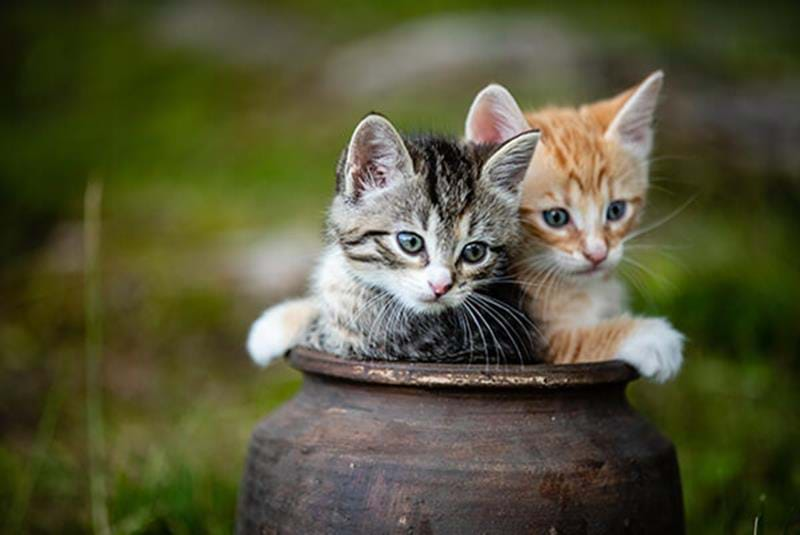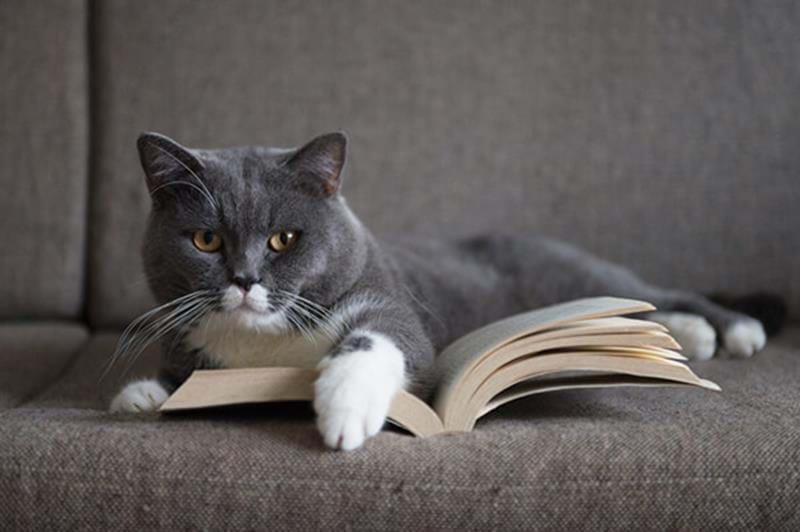Whether you are an experienced cat owner or just got your first furry friend, it can be difficult to interpret what your cat feels and thinks – while some signs are clear, others are much more subtle. By looking at your cat’s tail, ears and face, you can understand what signals it is trying to send and how it perceives certain situations.
HOW CATS BEHAVE WHEN THEY ARE HAPPY
It is often only possible to tell whether your cat is truly happy over a long period of time. But in the short-term, there are a few key body language cues and behaviours that you should look out for.
If your cat is happy, it will often keep its ears upright and its whiskers relaxed. If its eyes are half closed or blinking slowly, your cat probably feels safe and well. If it is standing up, it will often hold its tail high with a slight bend at the tip; if it lies down, it will likely tuck its paws in.
HOW TO TELL WHEN YOUR CAT IS ANGRY
How your cat behaves when it is angry depends on how angry it is. It may hiss, but it may be completely silent. Often, it will open its mouth and show its teeth, with wide eyes and small pupils.
The cat’s ears rest against its head and point backwards; the whiskers are directed away from the face. The tail either stands straight, or wraps around or under the body. It will either stand up and make itself as large as possible to look threatening, or lie low to be ready for attack.
HOW TO TELL IF YOUR CAT IS WORRIED
Cats are highly sensitive to change and new situations. If your cat lowers its head, curls up and raises its back, this may be a sign that it is feeling anxious.
It will often twist its tail from side to side, and sweep its whiskers either to the side or straight ahead. When your cat is anxious, its eyes will likely be fully open and its pupils will be enlarged. Its ears will move from a relaxed position to scan the surroundings, and if it is really worried, it may flatten its ears against the head.
HOW CATS BEHAVE WHEN THEY ARE SCARED
When a cat is frightened, it will lower its head, with its ears and whiskers flat against its head. The cat will either sweep their tail from side to side or hide their tail beneath the body and widen the eyes.
Sometimes the cat may hiss and arch their back to look big and scary, but in other cases they may simply pull away and retreat. No matter how your cat reacts, it is important to identify and remove any threats or irritations. Try to move slowly and calmly so that you are not seen as an additional threat, and instead they see you as a source of safety and comfort.
HOW TO TELL IF YOUR CAT HAS CALMED DOWN
If your cat has been scared or anxious, it is important to know what its body language will look like when it feels safe again.
When the cat feels relief, its ears, eyes, whiskers, body and tail tend to clearly relax again; often, it will begin to stretch its body out to release tension. Some cats also start yawning and half-close their eyes – in the exact same way as when they are relaxed.







